A family heirloom gets a new life for the next generation of strummers.
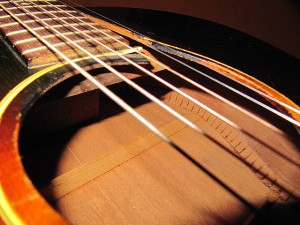
We weren’t sure we believed a phone caller who said his vintage Gibson acoustic guitar had a crack in the top that was open more than a quarter inch. But when he brought it in, sure enough that crack above the sound hole had buckled and bent until it was open wide. This crack likely started out as a hairline split on a guitar that hadn’t been sufficiently humidified. It wasn’t repaired right away and over time the top wood curled up and almost completely separated from the brace underneath. It’s a tricky repair that came together quite nicely. While we were at it, we reset the neck, planed the fretboard level, replaced the frets, and replaced the dried and curling pickguard with a custom-cut new guard that fit right in with this old beauty.
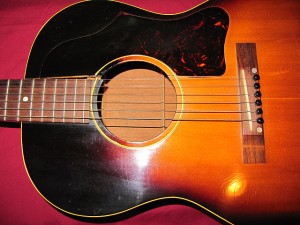
Here’s another couple of shots of that crack along the fretboard. This is a common spot for humidity cracks because it falls along the edge of rigid areas like the fretboard and head block and runs parallel to the grain of the top. Most often, we see these cracks soon after they occur, unlike this one that went untreated for years.
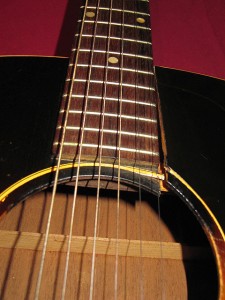
Closer inspection reveals yet another crack along the edge of the pick guard – another common spot for humidity cracks. This repair requires removing the old pick guard, gluing a spruce splint into the crack, and making a new pick guard. (The old one is usually so dry, shrunken, and caked with old glue that to reuse it is rarely worth the trouble it would take to make it look right again.)
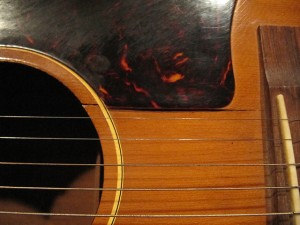
It wasn’t until this repair was complete that we realized we hadn’t taken pictures of the process. But thanks to the owner, we have the before shots above to compare with the after shots below. Looks like a new guitar!
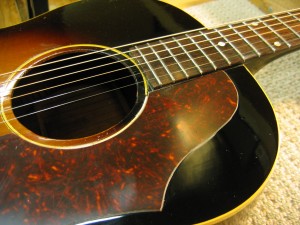
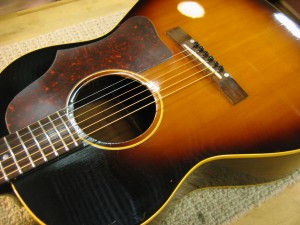
That’s a protective film on the new tortoise shell pick guard giving it a dulled appearance here. It peels off easily to reveal a shiny surface and a fit that perfectly matches the old pick guard’s “footprint.”
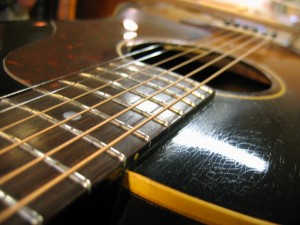
The newly leveled fretboard and new frets, reset neck, and comfortable playing action.
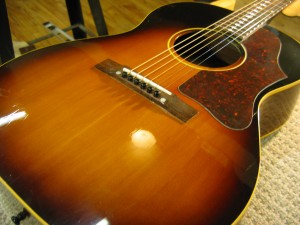
Thanks again for the before photos Ronald!

I am in the process of researching and restoring an 1890’s Imperial
Ditson guitar that has the neck broken off the body, a large curled
crack in the back and numerous side cracks. I am a woodworking
teacher (20 yrs) with 20 yrs previous experience building and
restoring antique furniture. I am stumped as to how to get the
now curled overlapping edges to line up on the back for glueing
Hello there.
How did you remove the pickguard exactly?
I have a ’62 LG that has the same identical issues, the crack by the neck is not so bad though. I used a lamp to warm the pickguard and managed to separate a portion of the pickguard along the lower edge. However looking under it I can see it’s either lifting the finish or there was no finish under the pickguard. No finish under the pickguard doesn’t seem to be right given it’s a red/cherry burst finish.
I warmed the pickguard enough that the celluloid was just plyable however I’m not sure the glue actually softened. Hence my thought that the finish has lifted.
With these thick pickguards do you have to get the top surface hot to get the glue beneath to warm enough to soften?
If I use naphtha and soak (using a syringe) under the raised edge and continue to use the lamp… is that adviseable?
Also where did you get the replacement guard or guard material from?
Thanks for the help/tips in advance.
Hello. I have a Gibson with this identical crack. Just for an idea,how much does a fix like this cost?
David, hopefully you’ve received my response in a direct email. Let me know if you have further questions or didn’t receive that.